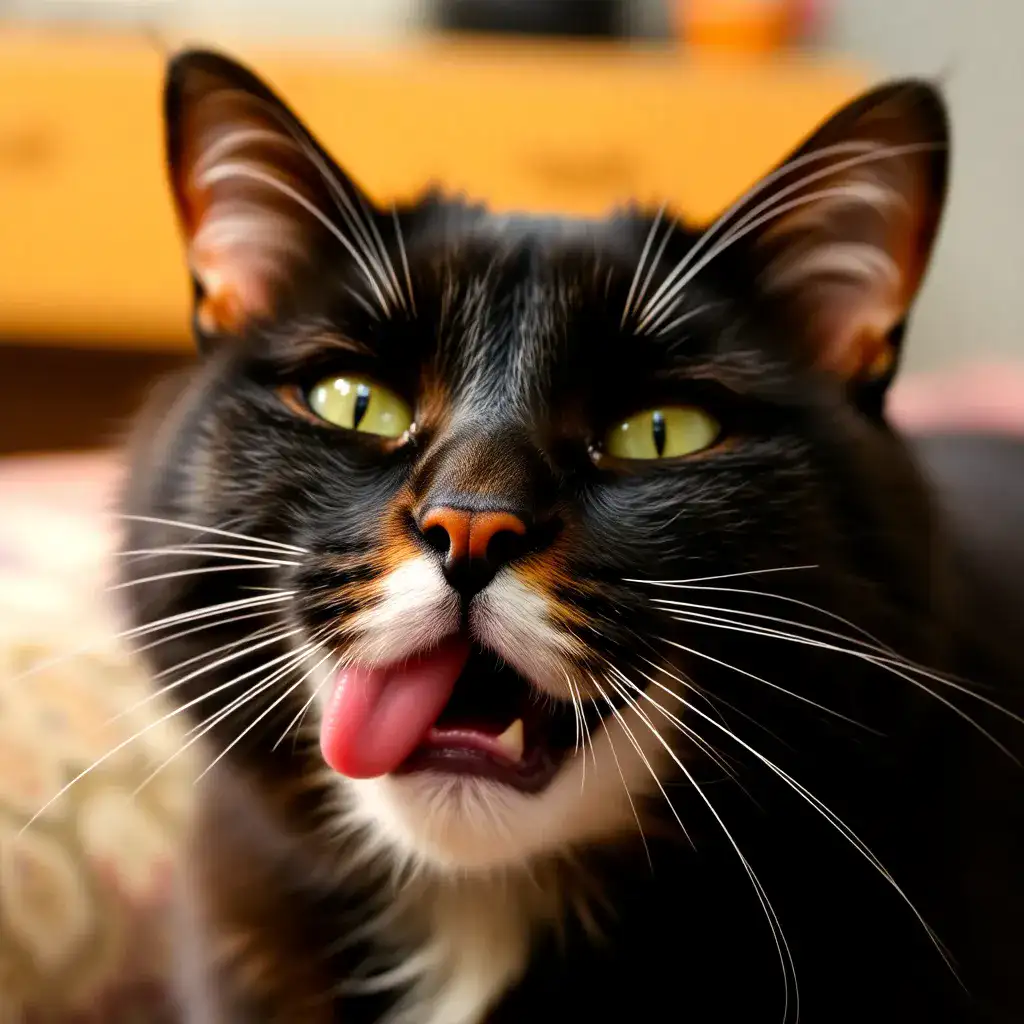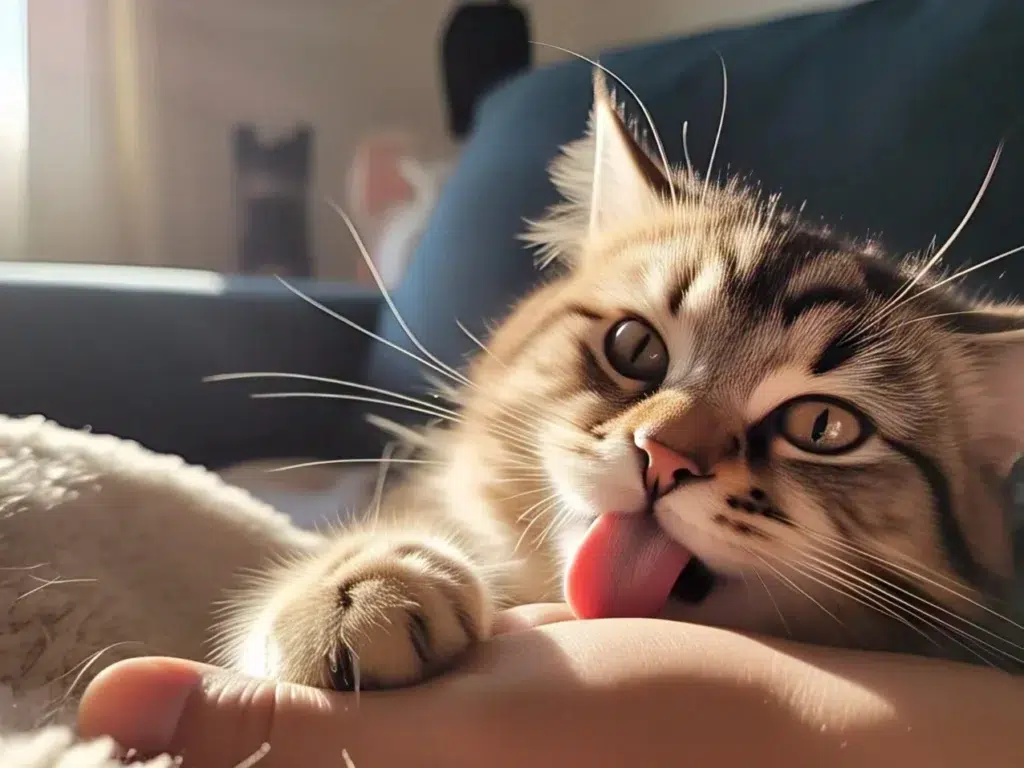Cat licking introduction :
Cats are known for their cleanliness and are often seen licking themselves several times a day. While this behavior is normal and healthy, it can sometimes raise questions for cat owners, especially when it seems excessive or focused on private areas. In this guide, we’ll explore why cats lick themselves, what’s normal, when it’s a concern, and how you can support healthy grooming habits.
Open the table of contents :
The Natural Instinct Behind Cat Grooming (Cat Licking)
Why Do Cats Lick Their Fur?
Grooming is a built-in survival and comfort behavior for cats. From the time they are kittens, cats instinctively clean themselves by licking their fur. This self-cleaning process helps remove dirt, odors, loose hair, and parasites.
How Grooming Keeps Cats Healthy
Regular licking not only keeps a cat’s coat sleek but also stimulates circulation and regulates body temperature. It’s their way of maintaining hygiene — much like how we bathe or brush our hair.
Evolutionary Reasons Cats Groom Themselves
As descendants of wild cats (Felis catus), modern housecats have retained grooming habits that helped their ancestors stay undetected by predators. Removing scent from their fur was crucial in the wild and remains a deeply embedded instinct today.
Common Areas Cats Lick — Including Their Private PartsIs It Normal for Cats to Lick Their Genitals?
Yes — it’s completely normal. Cats lick their genitals as part of their overall hygiene routine. After using the litter box, this behavior helps prevent infections and keeps them clean. However, excessive or obsessive licking may indicate an underlying issue.
Grooming After Using the Litter Box
Many owners notice their cat licking its rear or genitals after eliminating. This is a natural behavior to remove waste residue. If your cat stops doing this entirely, it may signal illness or obesity-related mobility problems.
Licking as a Sign of Cleanliness and Comfort
Besides hygiene, licking is also a soothing activity. It releases endorphins that help cats feel calm and relaxed, much like a child sucking their thumb. You may see your cat grooming before sleep or after eating to self-soothe.
When Is Cat Licking a Problem? (Cat Licking)
Signs of Over-Grooming or Compulsive Behavior
If your cat is constantly licking to the point of losing fur, forming bald patches, or causing wounds, it’s likely dealing with over-grooming. This condition can be behavioral or medical, and it’s important to identify the cause early.
Health Issues Linked to Excessive Licking
Several medical problems can trigger obsessive grooming:
- Fleas or mites: Parasites are common causes of itching and licking.
- Allergies: Food or environmental allergies may lead to itchy skin.
- Dermatitis: Skin irritation from products, fabrics, or plants.
- Hairballs: Licking leads to hair ingestion, and too much can create digestive issues.
Behavioral Triggers Like Stress or Anxiety
Stress from changes in the home, new pets, or lack of stimulation can result in compulsive licking. Cats may fixate on grooming as a coping mechanism, similar to humans with anxiety-driven habits.

How to Help a Cat That Licks Too Much (Cat Licking)
Rule Out Medical Problems with a Vet Visit
Always start by visiting a veterinarian. They can check for skin conditions, infections, parasites, and allergies. Blood tests or skin scrapings might be needed to determine the root cause.
Reducing Stress in Your Cat’s Environment
Stress can play a big role in over-grooming. Try these tips:
- Create quiet, safe spaces in your home.
- Use calming pheromone sprays.
- Keep a consistent routine with feeding and playtime.
Providing Distractions Through Toys and Interaction
Boredom often leads to excessive grooming. Provide interactive toys, scratching posts, and daily play sessions to redirect your cat’s focus. Puzzle feeders can also help keep your cat mentally stimulated.
Tips for Supporting Healthy Grooming Habits (Cat Licking)
Brushing and Grooming Tools for Cats
Help your cat by brushing it regularly — especially if it has long fur. This reduces shedding, prevents mats, and minimizes hairballs. Tools like de-shedding combs or grooming gloves are helpful for both cats and owners.
Proper Diet to Reduce Hairballs and Skin Issues
A high-quality diet supports skin health and coat condition. Foods rich in omega-3 fatty acids reduce shedding and inflammation. Consider hairball control formulas if your cat is prone to vomiting fur.
When to Intervene and When to Let Cats Groom
Normal grooming is healthy and should be left uninterrupted. But if licking becomes obsessive, painful, or leads to bald patches, it’s time to step in. Observation is key — the frequency, intensity, and focus area all matter.
Conclusion: Know What’s Normal and When to Act
Cats licking themselves is part of their instinctive behavior and a sign of good hygiene. However, over-grooming, especially in the genital area or when accompanied by hair loss or sores, could point to a medical or emotional issue. By observing your cat, maintaining a healthy routine, and consulting your vet when needed, you can ensure your feline friend stays both clean and healthy.

Also learn about these topics:
The Ultimate Guide to Cat Health: How to Keep Your Feline Happy and Thriving
